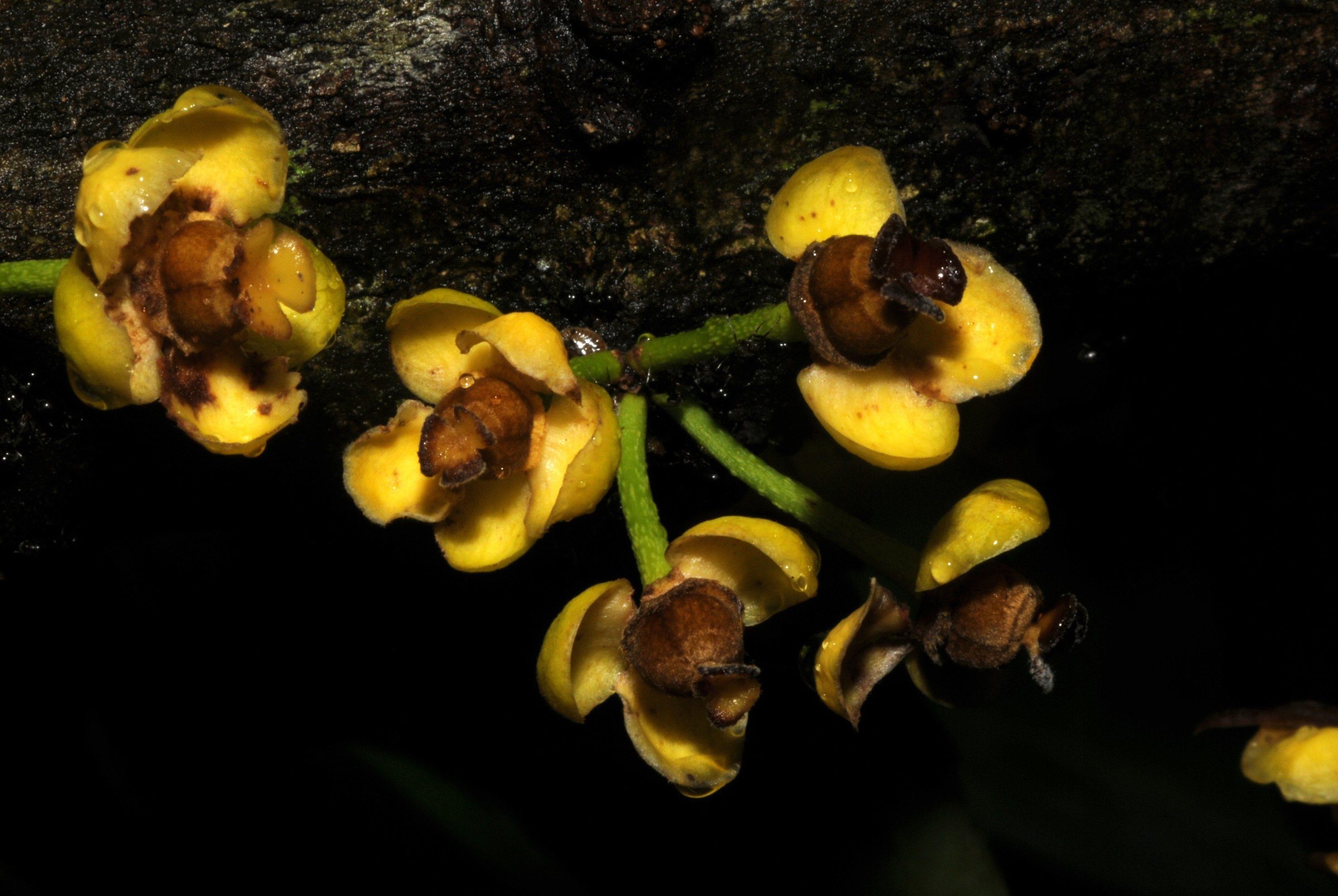Putranjivaceae: A diverse, pantropical family of dioecious trees of high ecological, conservation and phytochemical value
Putranjivaceae Endl. is a family of evergreen trees and shrubs found in tropical and subtropical areas of Africa, America, Asia, Australia and the Pacific. Their diversity is distributed between two genera of very unequal size. The four species of the type genus, Putranjiva Wall., occur in South and Southeast Asia. The rest are classified in Drypetes Vahl, which currently accounts for 218 species. Drypetes is well known for its diversity and the difficulties taxonomists have found in correctly identifying its species, resulting in a large proportion of unidentified herbarium collections. The Putranjivaceae are the only group outside of the Brassicales Bromhead known to have the glucosinolate biochemical pathway. The sulphur-containing end products, the so-called “mustard oil bomb”, may play an important role in the defence against herbivores and in the reproductive biology of these plants. Many of its species are used in Traditional Medicine, and exploring the many properties (medicinal, antibacterial, etc.) of many of the Putranjivaceae has been the aim of a number of recent phytochemical studies.
The central goal of the Putranjivaceae Taxonomic Expert Network is to provide an accurate and up-to-date classification of the Putranjivaceae, as well as a consensus list of the accepted species names and their synonyms, which is critical to support ongoing and future research with these plants. This TEN aims to bring together active taxonomists and colleagues from other disciplines with an interest in or focus on Putranjivaceae, particularly to fill geographical gaps in our membership.
Key Contributors
- Alejandro Quintanar (Herbarium MA, Royal Botanic Garden of Madrid CSIC)
- David J. Harris (Royal Botanic Garden Edinburgh, Edinburgh, United Kingdom)
- Patricia Barberá (Department of Biology, Universidad Autónoma de Madrid, Madrid, Spain)
Acknowledgements
We thank Alan Elliott of Royal Botanic Garden Edinburgh for supporting the establishment of the Putranjivaceae TEN, and to all the researchers who contribute taxonomic data on Putranjivaceae.
Key Literature
- APG IV. 2016. An update of the Angiosperm Phylogeny Group classification for the orders and families of flowering plants: APG IV. Botanical Journal of the Linnean Society 181(1):1–20.
- Govaerts R, Frodin DG, Radcliffe-Smith A. 2000. World checklist and bibliography of Euphorbiaceae. Kew: Royal Botanic Gardens, Kew.
- Matthews ML, Endress PK. 2013. Comparative floral structure and systematics of the clade of Lophopyxidaceae and Putranjivaceae (Malpighiales). Botanical Journal of the Linnean Society 172:404–448.
- Meeuse ADJ. 1990. The Euphorbiaceae Auct. Plur., an unnatural taxon. Eburon: Delft.
- Levin GA. 2014. Putranjivaceae. In: K. Kubitzki K. (ed.), Flowering Plants. Eudicots: Malpighiales: 273‒276 [The Families and Genera of Vascular Plants 11]. Springer.
- Lüthy B, Matile P. 1984. The Mustard Oil Bomb: rectified analysis of the subcellular organization of the Myrosinase System. Biochemie und Physiologie der Pflanzen 179(1‒2):5‒12.
- Pax FA, Hoffmann K. 1922. Euphorbiaceae-Phyllanthoideae-Phyllantheae. In: Engler HGA, editor. Das Pflanzenreich. Regni vegetabilis conspectus 147, 15(Heft 81). Leipzig: Verlag von Wilhelm Engelmann.
- Pax FA, Hoffmann K. 1922. Euphorbiaceae-Phyllanthoideae-Phyllantheae. In: Engler HGA, editor. Das Pflanzenreich. Regni vegetabilis conspectus 147, 15(Heft 81). Leipzig: Verlag von Wilhelm Engelmann.
- Radcliffe-Smith A. 2001. Genera Euphorbiacearum. Kew: Royal Botanic Gardens.
- Wurdack KJ, Hoffmann P, Samuel R, de Bruijn A, van der Bank M, Chase MW. 2004. Molecular phylogenetic analysis of Phyllanthaceae (Phyllanthoideae pro parte, Euphorbiaceae sensu lato) using plastid rbcL DNA sequences. American Journal of Botany 91:1882–1900.
